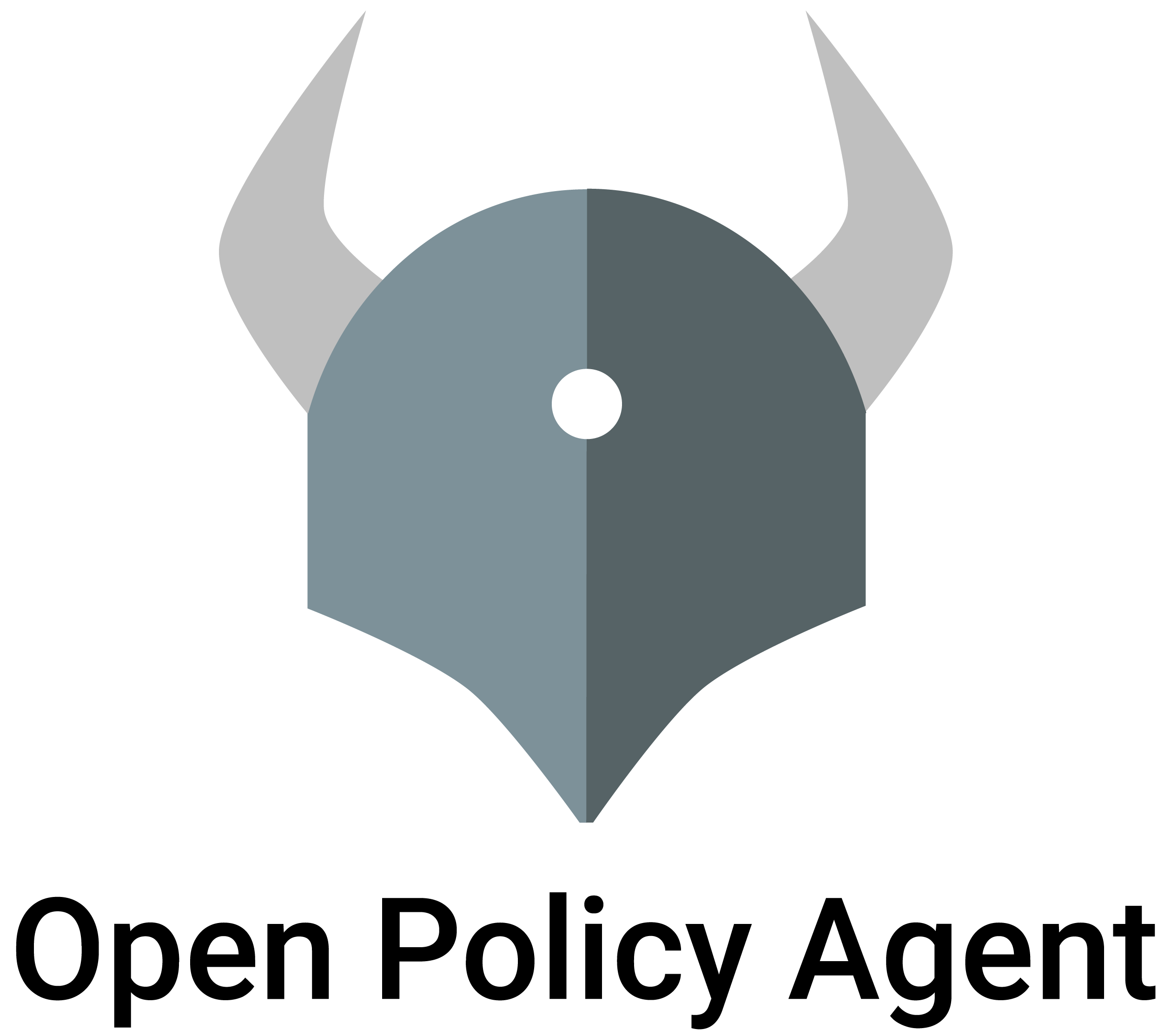Deployments
This document helps you get OPA up and running in different deployment environments. You should read this document if you are planning to deploy OPA.
Docker
Docker makes OPA easy to deploy in different types of environments.
This section explains how to use the official OPA Docker images. If this is your first time deploying OPA and you plan to use one of the Docker images, we recommend you review this section to familiarize yourself with the basics.
OPA releases are available as images on Docker Hub.
Running with Docker
If you start OPA outside of Docker without any arguments, it prints a list of
available commands. By default, the official OPA Docker image executes the run
command which starts an instance of OPA as an interactive shell. This is nice
for development, however, for deployments, we want to run OPA as a server.
The run command accepts a --server (or -s) flag that starts OPA as a
server. See --help for more information on other arguments. The most important
command line arguments for OPA’s server mode are:
--addrto set the listening address (default:0.0.0.0:8181).--log-level(or-l) to set the log level (default:"info").--log-formatto set the log format (default:"text").
By default, OPA listens for normal HTTP connections on 0.0.0.0:8181. To make
OPA listen for HTTPS connections, see Security.
We can run OPA as a server using Docker:
docker run -p 8181:8181 openpolicyagent/opa \
run --server --log-level debugTest that OPA is available:
curl -i localhost:8181/
Logging
OPA logs to stderr and the level can be set with --log-level/-l. The default log level is info which causes OPA to log request/response headers.
time="20.7.13-12T03:03:23Z" level=info msg="First line of log stream." addr=":8181"
time="20.7.13-12T03:03:30Z" level=debug msg="Received request." client_addr="172.17.0.1:60952" req_body= req_id=1 req_method=GET req_params=map[] req_path="/v1/data"
time="20.7.13-12T03:03:30Z" level=debug msg="Sent response." client_addr="172.17.0.1:60952" req_id=1 req_method=GET req_path="/v1/data" resp_bytes=13 resp_duration=0.402793 resp_status=200
If the log level is set to debug the request and response message bodies will be logged. This is useful for development however it can be expensive in production.
time="20.7.15-16T00:09:24Z" level=info msg="Received request." client_addr="172.17.0.1:42164" req_body="{"input": "hello"}" req_id=1 req_method=POST req_params=map[] req_path="/v1/data"
time="20.7.15-16T00:09:24Z" level=info msg="Sent response." client_addr="172.17.0.1:42164" req_id=1 req_method=POST req_path="/v1/data" resp_body="{"result":{"example":{"message":"world"}}}" resp_bytes=42 resp_duration=0.618689 resp_status=200
The default log format is text-based and intended for development. For
production, enable JSON formatting with --log-format json:
{"client_addr":"[::1]:64427","level":"debug","msg":"Received request.","req_body":"","req_id":1,"req_method":"GET","req_params":{},"req_path":"/v1/data","time":"20.7.13-11T18:22:18-08:00"}
{"client_addr":"[::1]:64427","level":"debug","msg":"Sent response.","req_id":1,"req_method":"GET","req_path":"/v1/data","resp_bytes":13,"resp_duration":0.392554,"resp_status":200,"time":"20.7.13-11T18:22:18-08:00"}
Volume Mounts
By default, OPA does not include any data or policies.
The simplest way to load data and policies into OPA is to provide them via the file system as command line arguments. When running inside Docker, you can provide files via volume mounts.
docker run -v $PWD:/example openpolicyagent/opa eval --data /example 'data.example.greeting'$PWD/example/data.json
{
"hostOS": "$(uname)"
}
$PWD/example/policy.rego
package example
greeting = msg {
concat("", ["Hello ", data.example.hostOS, "!"], msg)
}
More Information
For more information on OPA’s command line, see --help:
docker run openpolicyagent/opa run --help
Tagging
The Docker Hub repository contains tags for every release of OPA. For more information on each release see the GitHub Releases page.
The “latest” tag refers to the most recent release. The latest tag is convenient if you want to quickly try out OPA however for production deployments, we recommend using an explicit version tag.
Development builds are also available on Docker Hub. For each version the
{version}-dev tag refers the most recent development build for that version.
The version information is contained in the OPA executable itself. You can check the version with the following command:
docker run openpolicyagent/opa versionKubernetes
Kicking the Tires
This section shows how to quickly deploy OPA on top of Kubernetes to try it out.
These steps assume Kubernetes is deployed with minikube. If you are using a different Kubernetes provider, the steps should be similar. You may need to use a different Service configuration at the end.
First, create a ConfigMap containing a test policy. The test policy will define a blacklist that rejects:
- Objects missing a ‘customer’ label.
- Pods referring to images outside the corporate registry.
In this case, the policy file does not contain sensitive information so it’s fine to store as a ConfigMap. If the file contained sensitive information, then we recommend you store it as a Secret.
example.rego
package example
default deny = false
# Reject objects without a customer label.
deny {
not input.metadata.labels.customer
}
# Reject pods referring to images outside the corporate registry.
deny {
input.kind == "Pod"
container := input.spec.containers[_]
not re_match("^registry.acmecorp.com/.+$", container.image)
}kubectl create configmap example-policy --from-file example.regoNext, create a Deployment to run OPA. The ConfigMap containing the policy is volume mounted into the container. This allows OPA to load the policy from the file system.
deployment-opa.yaml:
apiVersion: extensions/v1beta1
kind: Deployment
metadata:
name: opa
labels:
app: opa
spec:
replicas: 1
template:
metadata:
labels:
app: opa
name: opa
spec:
containers:
- name: opa
image: openpolicyagent/opa:0.10.7
ports:
- name: http
containerPort: 8181
args:
- "run"
- "--ignore=.*" # exclude hidden dirs created by Kubernetes
- "--server"
- "/policies"
volumeMounts:
- readOnly: true
mountPath: /policies
name: example-policy
volumes:
- name: example-policy
configMap:
name: example-policy
kubectl create -f deployment-opa.yamlAt this point OPA is up and running. Create a Service to expose the OPA API so that you can query it:
service-opa.yaml
kind: Service
apiVersion: v1
metadata:
name: opa
labels:
app: opa
spec:
type: NodePort
selector:
app: opa
ports:
- name: http
protocol: TCP
port: 8181
targetPort: 8181kubectl create -f service-opa.yamlGet the URL of OPA using minikube:
OPA_URL=$(minikube service opa --url)Now you can query OPA’s API. If you use the Pod below, deny will be true
because the Pod refers to image outside the corporate registry.
example-pod.json
{
"input": {
"kind": "Pod",
"apiVersion": "v1",
"metadata": {
"name": "opa",
"labels": {
"customer": "example.org"
}
},
"spec": {
"containers": [
{
"name": "opa",
"image": "openpolicyagent/opa"
}
]
}
}
}
curl $OPA_URL/v1/data -d @example-pod.jsonIf you update the image to refer to the corporate registry, deny will be
false.
